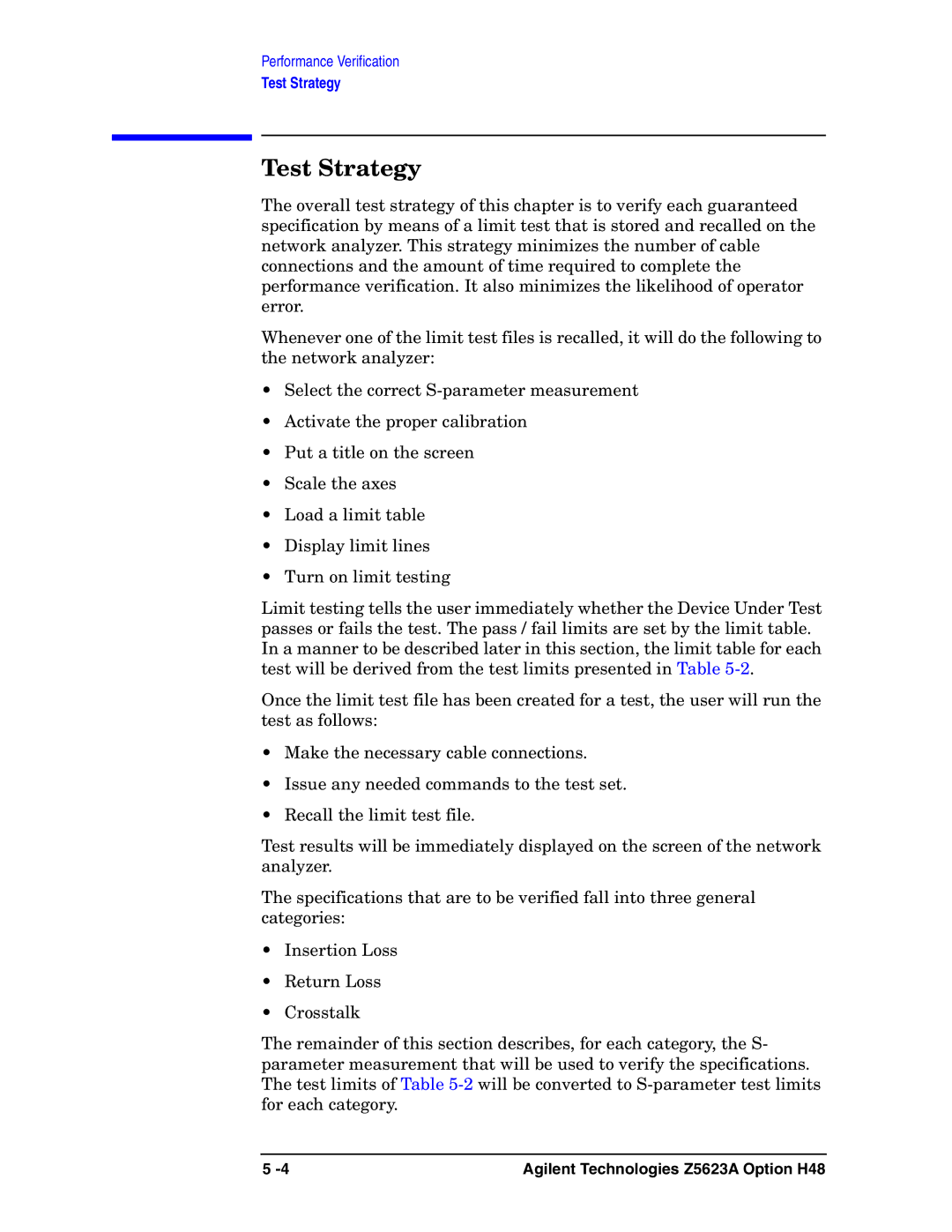
Performance Verification
Test Strategy
Test Strategy
The overall test strategy of this chapter is to verify each guaranteed specification by means of a limit test that is stored and recalled on the network analyzer. This strategy minimizes the number of cable connections and the amount of time required to complete the performance verification. It also minimizes the likelihood of operator error.
Whenever one of the limit test files is recalled, it will do the following to the network analyzer:
•Select the correct
•Activate the proper calibration
•Put a title on the screen
•Scale the axes
•Load a limit table
•Display limit lines
•Turn on limit testing
Limit testing tells the user immediately whether the Device Under Test passes or fails the test. The pass / fail limits are set by the limit table. In a manner to be described later in this section, the limit table for each test will be derived from the test limits presented in Table
Once the limit test file has been created for a test, the user will run the test as follows:
•Make the necessary cable connections.
•Issue any needed commands to the test set.
•Recall the limit test file.
Test results will be immediately displayed on the screen of the network analyzer.
The specifications that are to be verified fall into three general categories:
•Insertion Loss
•Return Loss
•Crosstalk
The remainder of this section describes, for each category, the S- parameter measurement that will be used to verify the specifications. The test limits of Table
5 | Agilent Technologies Z5623A Option H48 |
